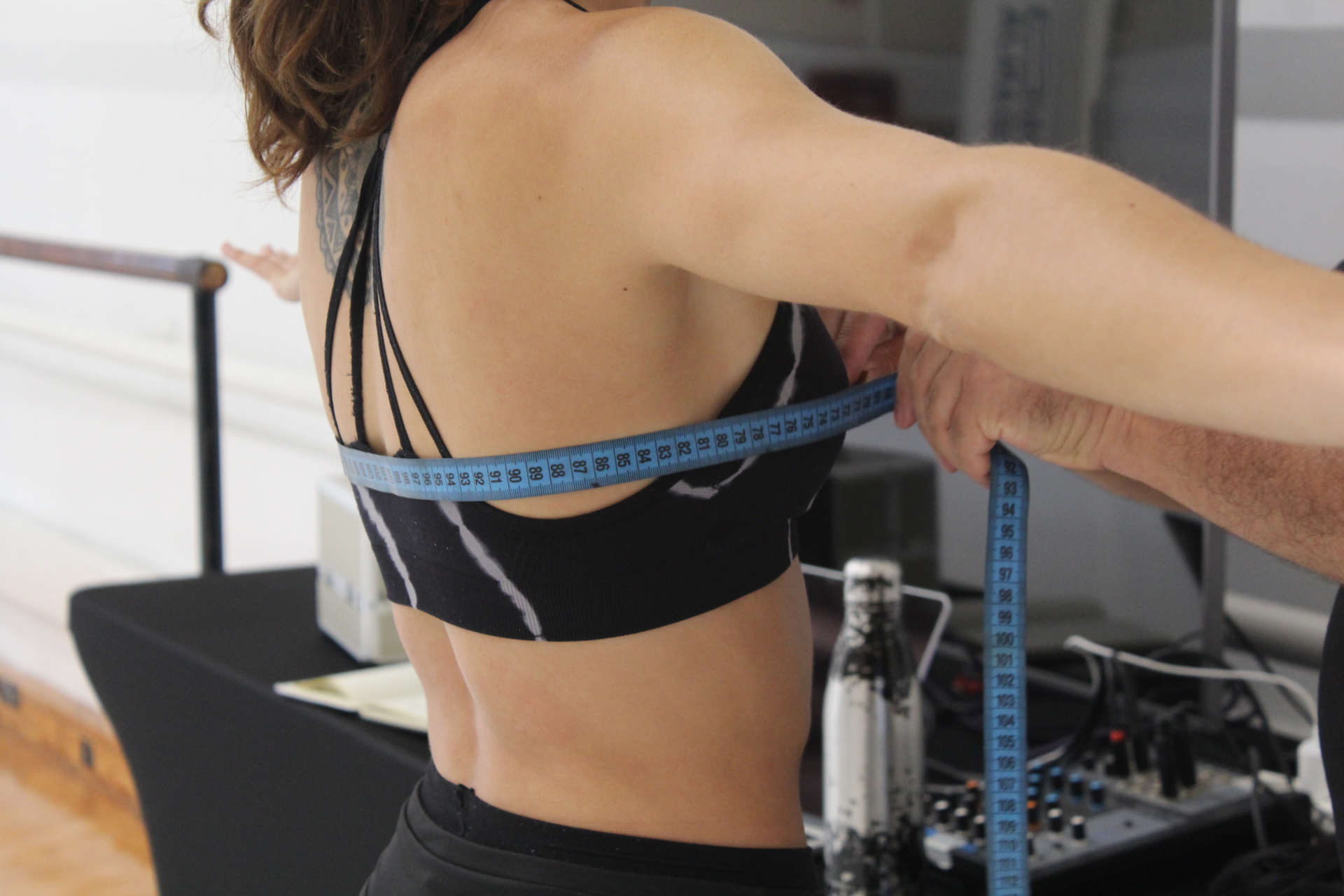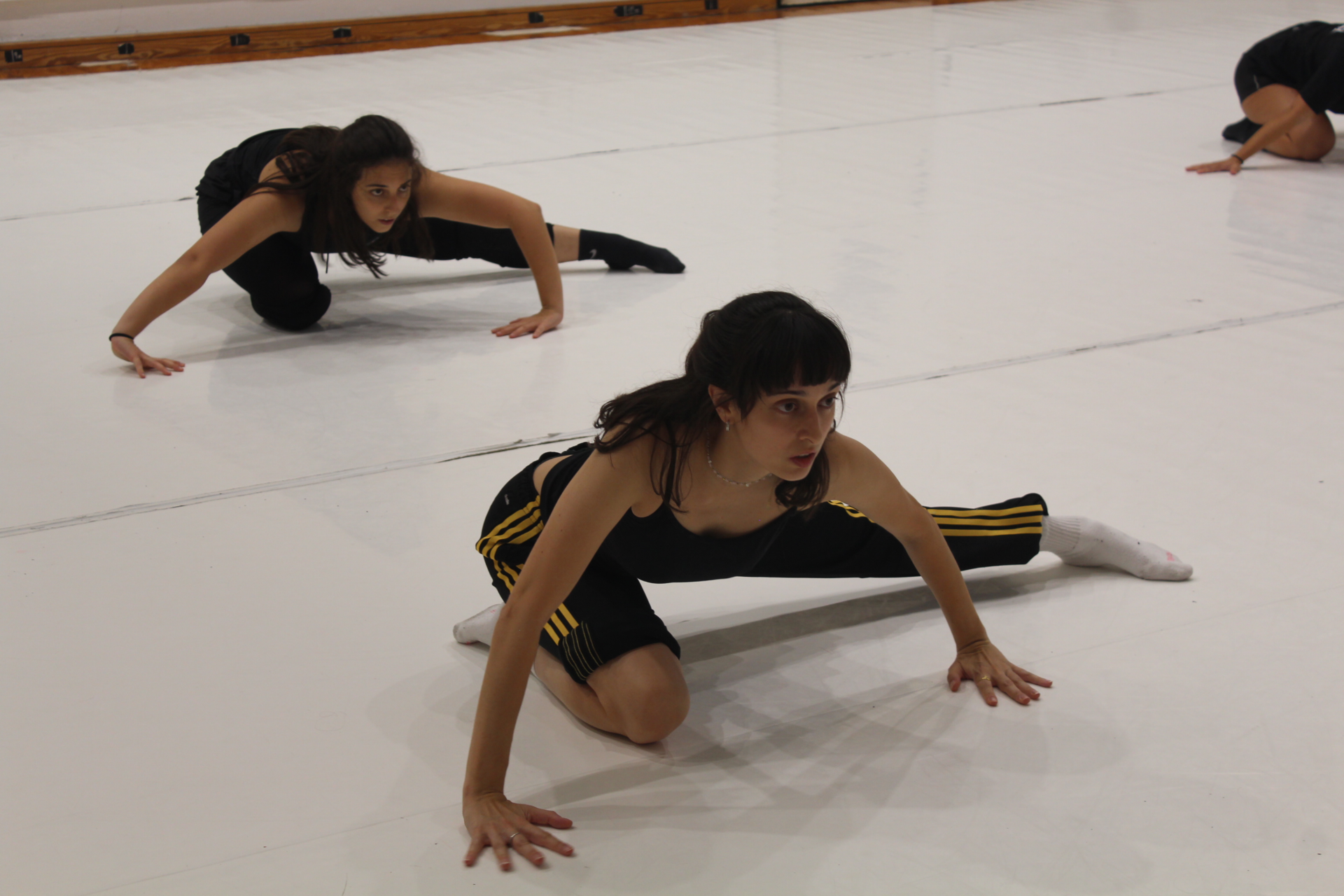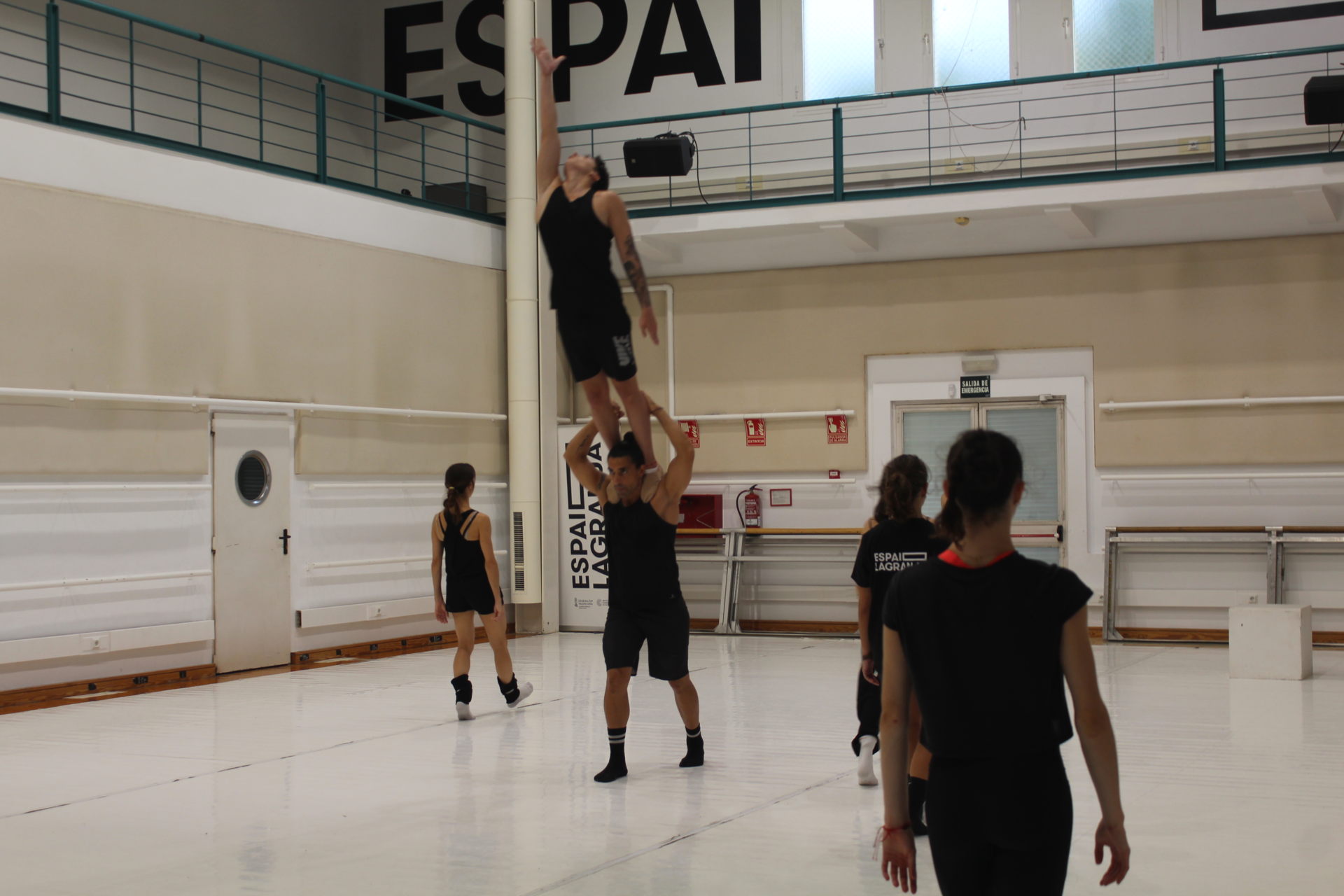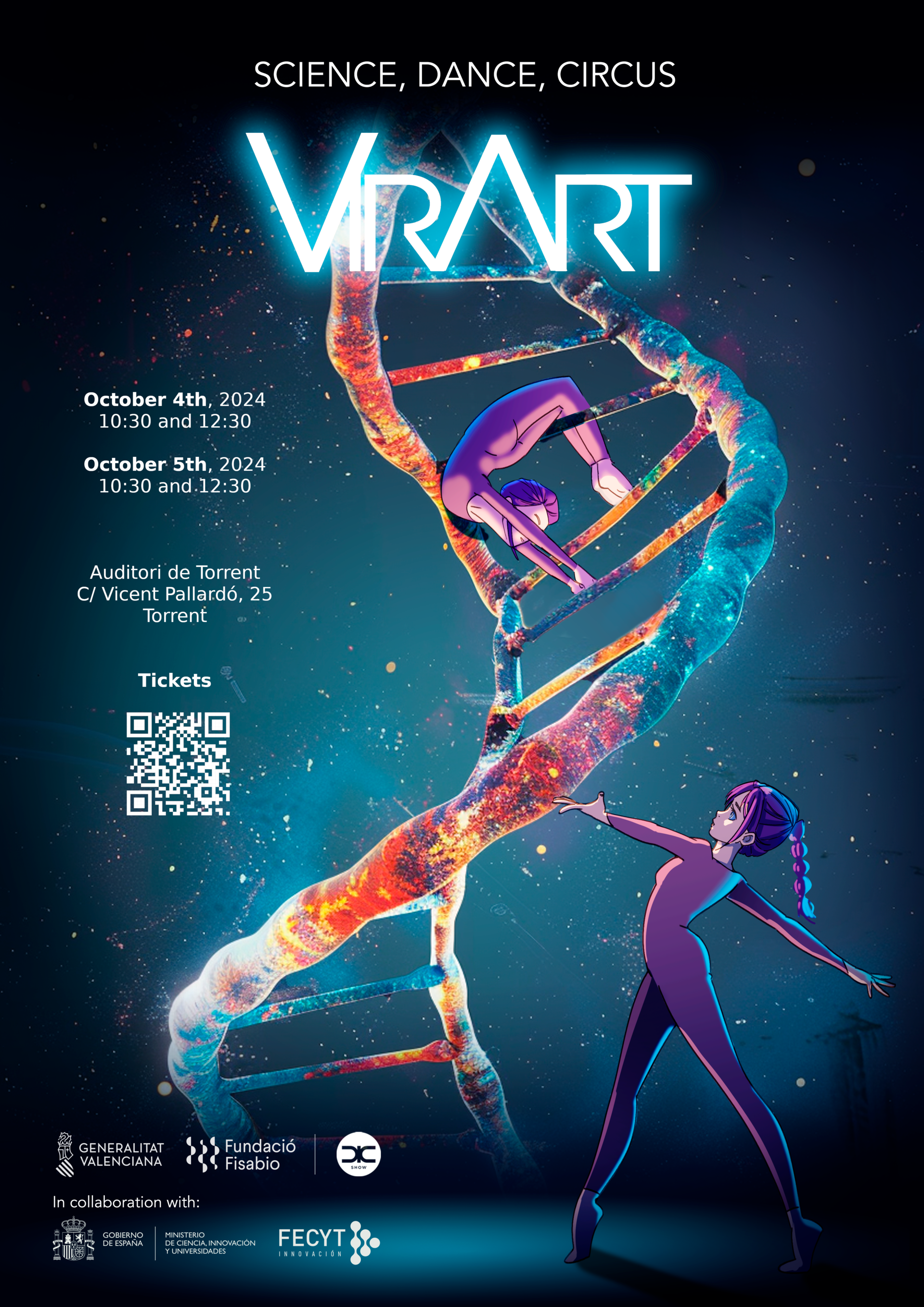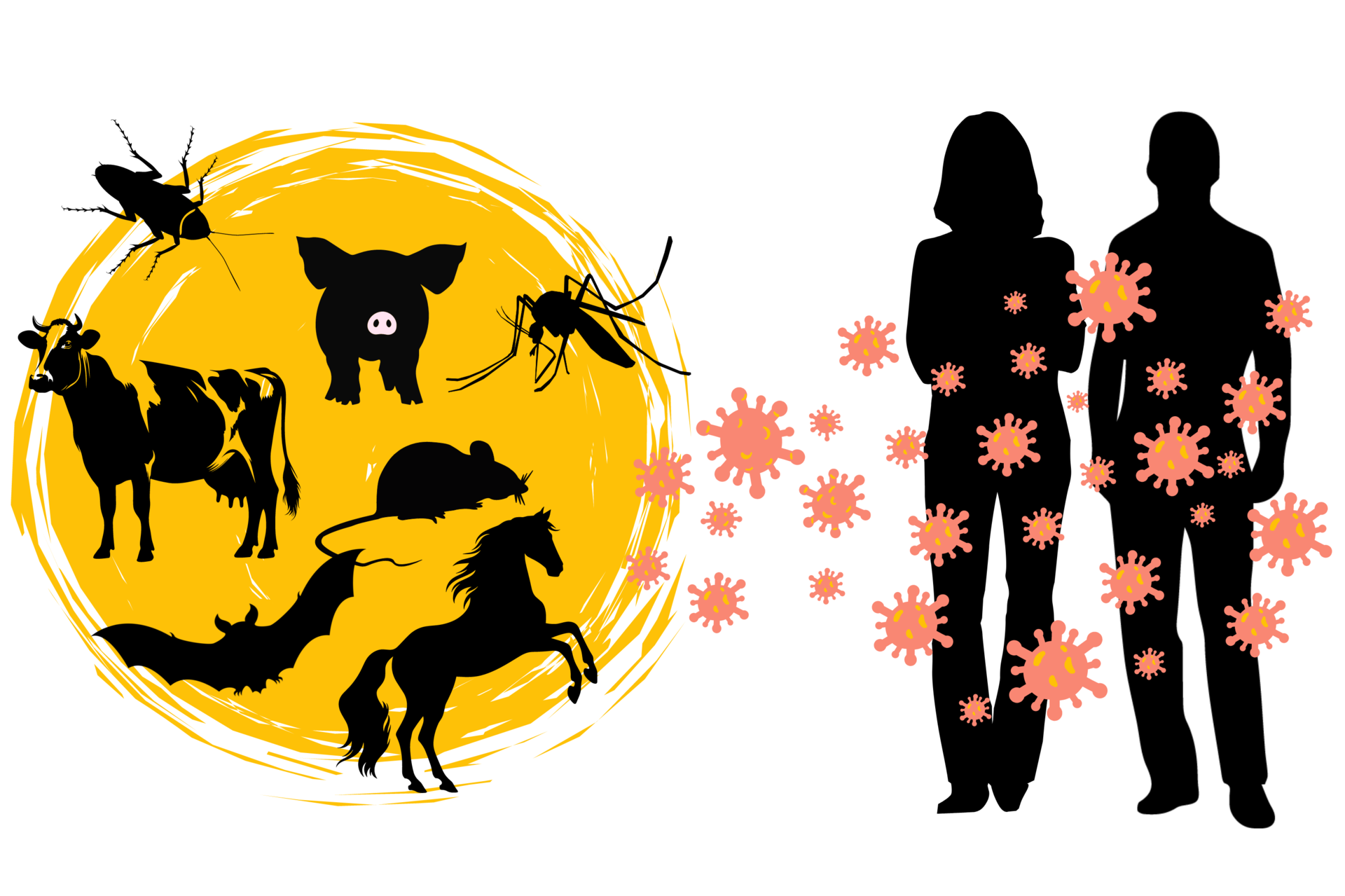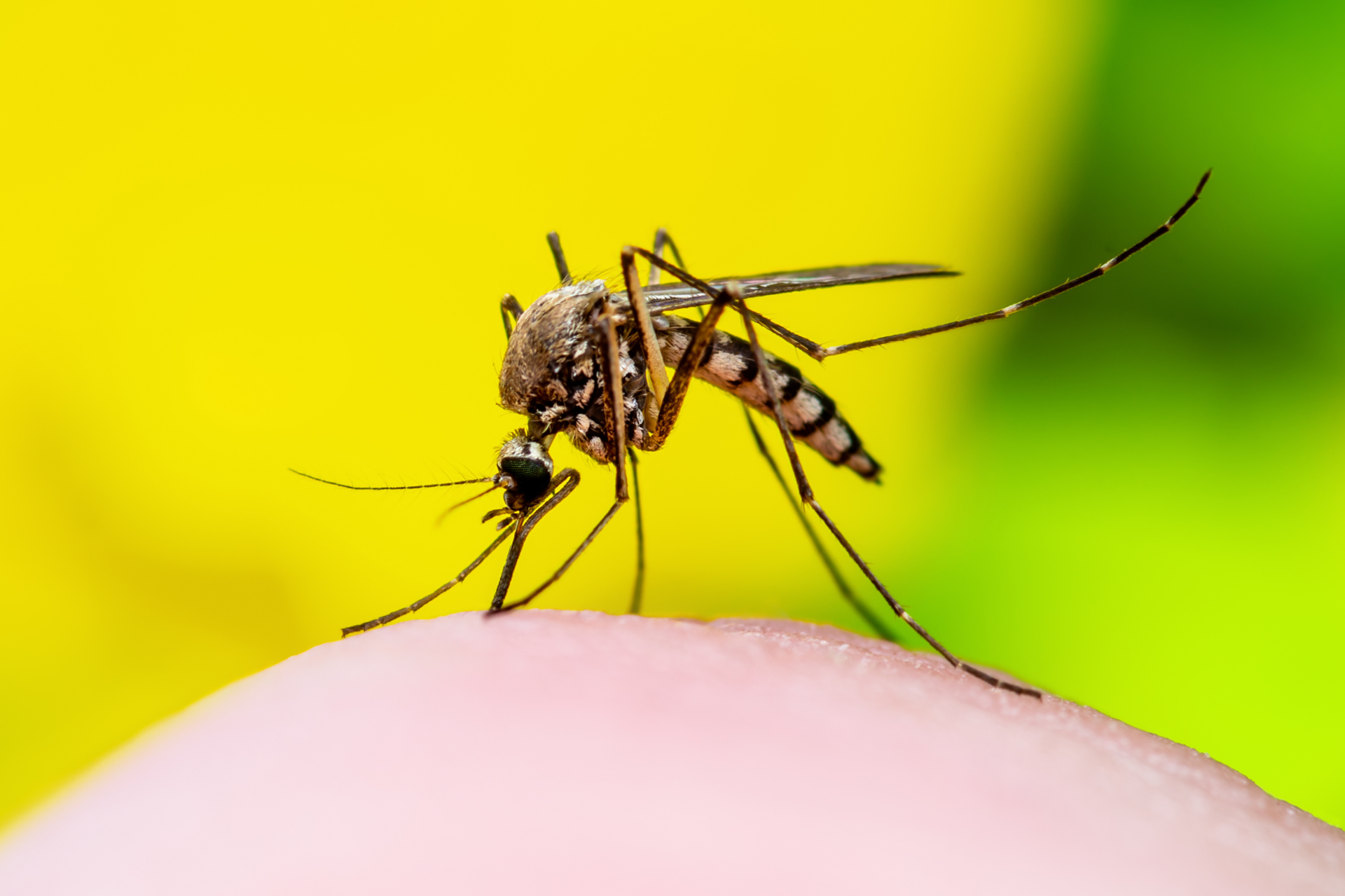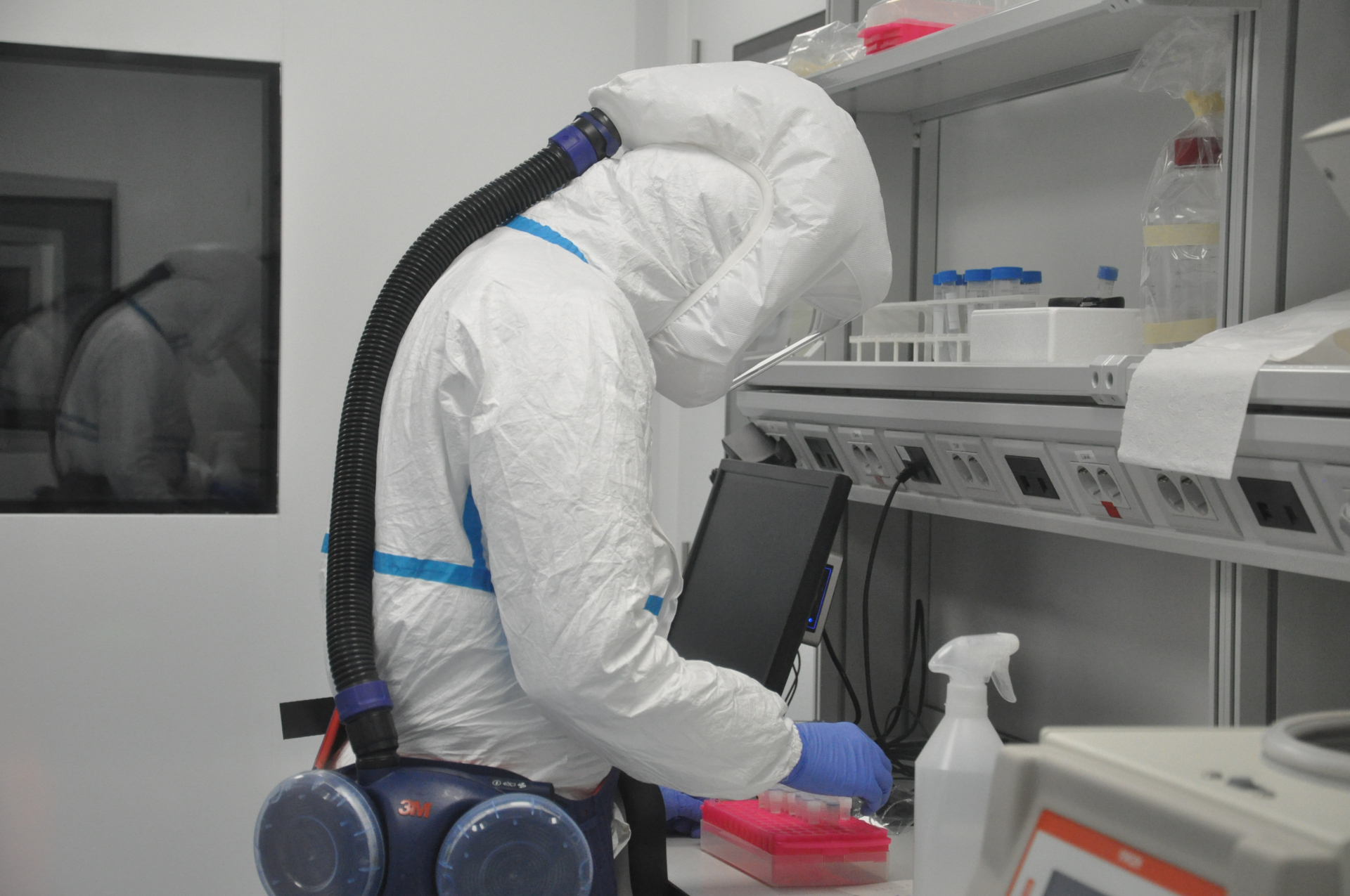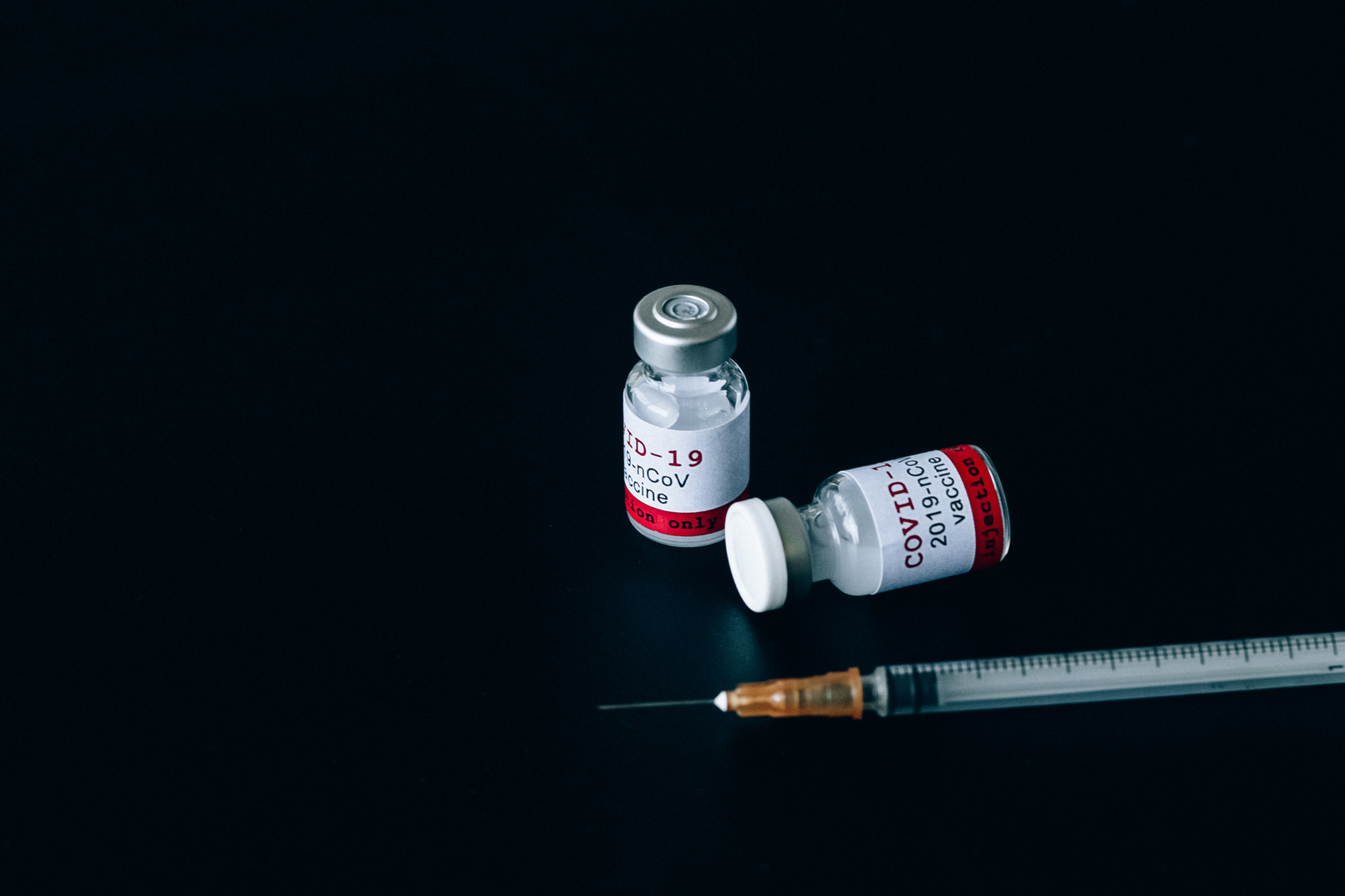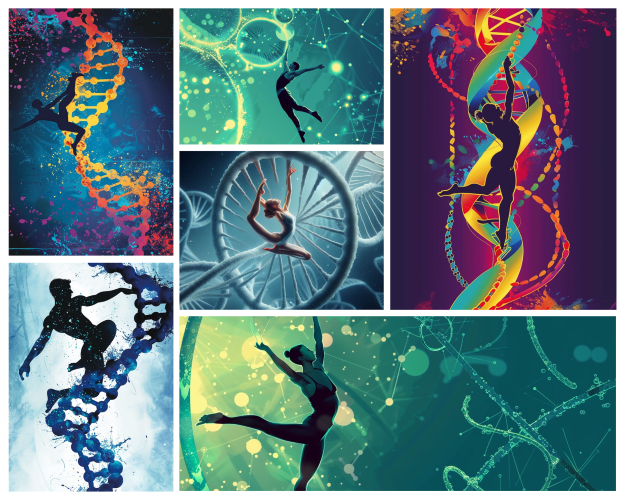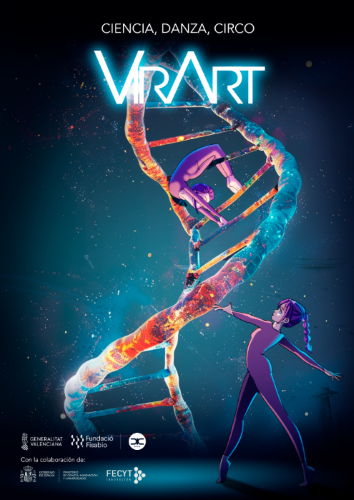Dates and ticket reservations
October 4th
First screening: 10.30 a.m. - FULL
Second screening: 12.30 p.m. – FULL
October 5th
First screening: 10.30 a.m.
Second screening: 12.30 p.m.
Location
↪ Auditori de Torrent (Vicent Pallardó St., 25).
Pillars of the VirArt show
Science
VirArt is an artistic experience that unfolds over six scenes, each connected by a common narrative thread. In each scene, key concepts related to infectious diseases and epidemic processes are explored, allowing us to understand how these phenomena affect our lives. Discover each of these themes:
Each scene in VirArt invites you to reflect on the relationship between humanity and infectious diseases, helping us to better understand how to deal with them in the present and the future.
AI
Recent developments in artificial intelligence (AI) have revolutionized many fields, from multimedia content creation and data analysis to text generation and proofreading. This technology has enormous potential to help us in multiple tasks. In our case, we have used AI algorithms to co-generate some of the multimedia elements of the show. In order to show both the potential and the limitations of this technology, the following details the creation process of each of the multimedia elements of the show in which this technology has intervened, differentiating the parts in which AI intervened from those developed by human artistic talent.
Poster
The original idea was to recreate a DNA chain, within which a couple of dance poses were integrated to suggest an interaction between dance and biomedical research. In addition, we wanted it to be reminiscent of scene 5 of the show, in which an aerial acrobatics number is performed on a helical structure that evokes a DNA strand. Using Midjourney's image generation engine through the Discord application, we obtained the first results.
At first glance the result is striking and evokes the original idea. However, it failed to accurately reflect the specific idea we had in mind. In addition, some of the figures and silhouettes had obvious anatomical errors, and the helical structure of the DNA was sometimes lost.
Therefore, we opted to generate the DNA using Midjourney and design the silhouettes by hand. To do this, we asked the algorithm to generate an "illustration of a double-helical DNA strand as seen from a bottom perspective". On this basis, two characters were designed: one in a more dance-oriented position and one interacting acrobatically within the structure. In addition, the AI-generated illustration was modified to give more continuity to the double helix.
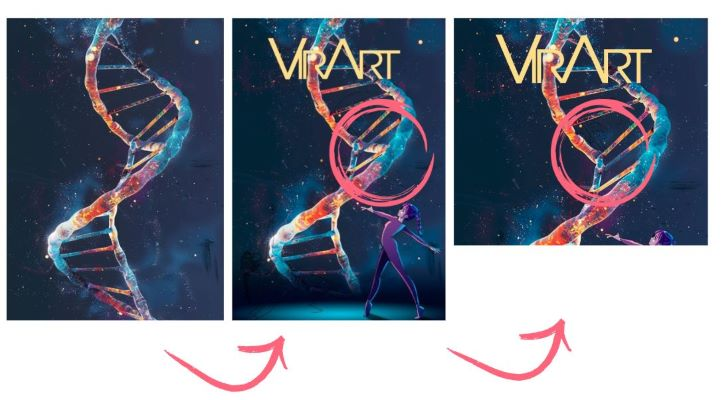
Finally, several typographies were tested and modifications were made until the final typography was chosen. In addition, the background and floor lighting was adjusted, and the logos of the entities involved were added.
Art
According to the last survey on the Social Perception of Science and Technology (FECYT, 2022), scientific and technical professions (engineering, science, medicine) are the most recognised by society, obtaining a rating of more than 4 on a scale of 5. Despite this, only 12% of those surveyed are interested in scientific and technical subjects and, moreover, almost half of the population believes that 'science is so specialised that it is difficult to understand'. This reflects the fact that science and technology, although respected at a professional level by society, are considered too 'out of reach' to understand or be trained in these disciplines. As a result, more and more institutions and organisations are advocating increased outreach and dissemination initiatives to bring science closer to society. However, an important part of the public that attends many of these initiatives is, in our experience, already aware of scientific issues or already has a relationship and contact (professional or personal) with this field.
VirArt was born with the support of FECYT in the framework of the 'Call for the Promotion of Scientific Culture', specifically in the modality of 'Singular Projects: Art, Science, Technology and Society'. The project does not seek to put art at the service of science, nor vice versa, but to develop a joint work between all parties, in the style of the New European Bauhaus. Specifically, we seek to bring scientific knowledge and information to leisure and cultural initiatives in a perfectly integrated fusion, so that the usual public of this type of activities is the receiver of the scientific information that is intended to be transmitted.

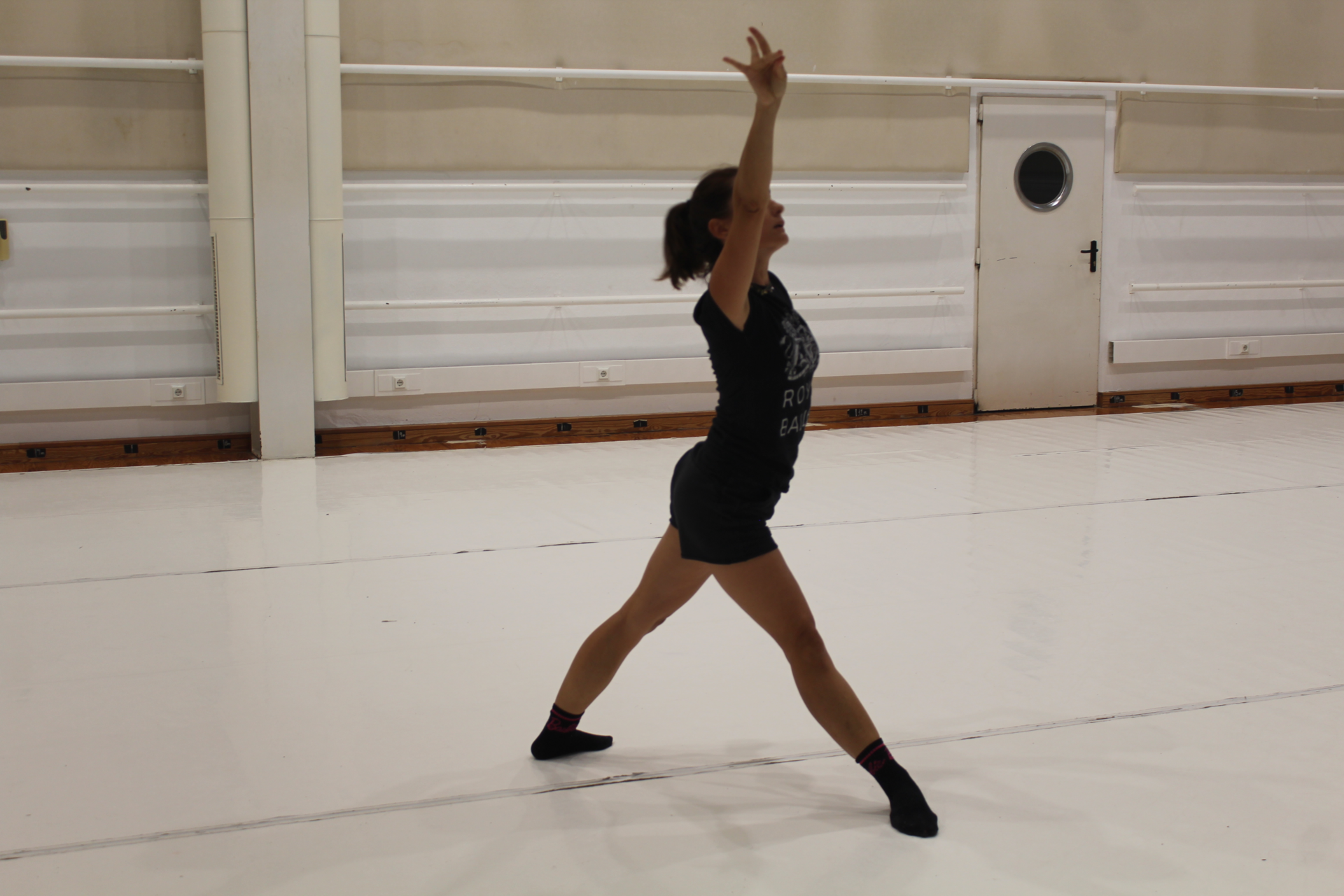

For this reason, a creative team was formed for the VirArt initiative conformed by Fisabio research staff, the choreographer and artistic director Javier San Martín, and the creative staff of Dinamic Show. This team defined the script, the scenic and musical needs, as well as the potential development and scope of the work. We thought that contemporary dance, due to its plasticity, sense of freedom of expression and movement, and its capacity to transmit emotions, is the ideal dance genre to narrate a complex story and relate it to key biomedical concepts in current epidemiological research. On the other hand, the circus disciplines incorporated into the show, mainly those derived from acrobatic gymnastics, add a spectacular touch and are perfectly integrated into the choreography defined by contemporary dance.
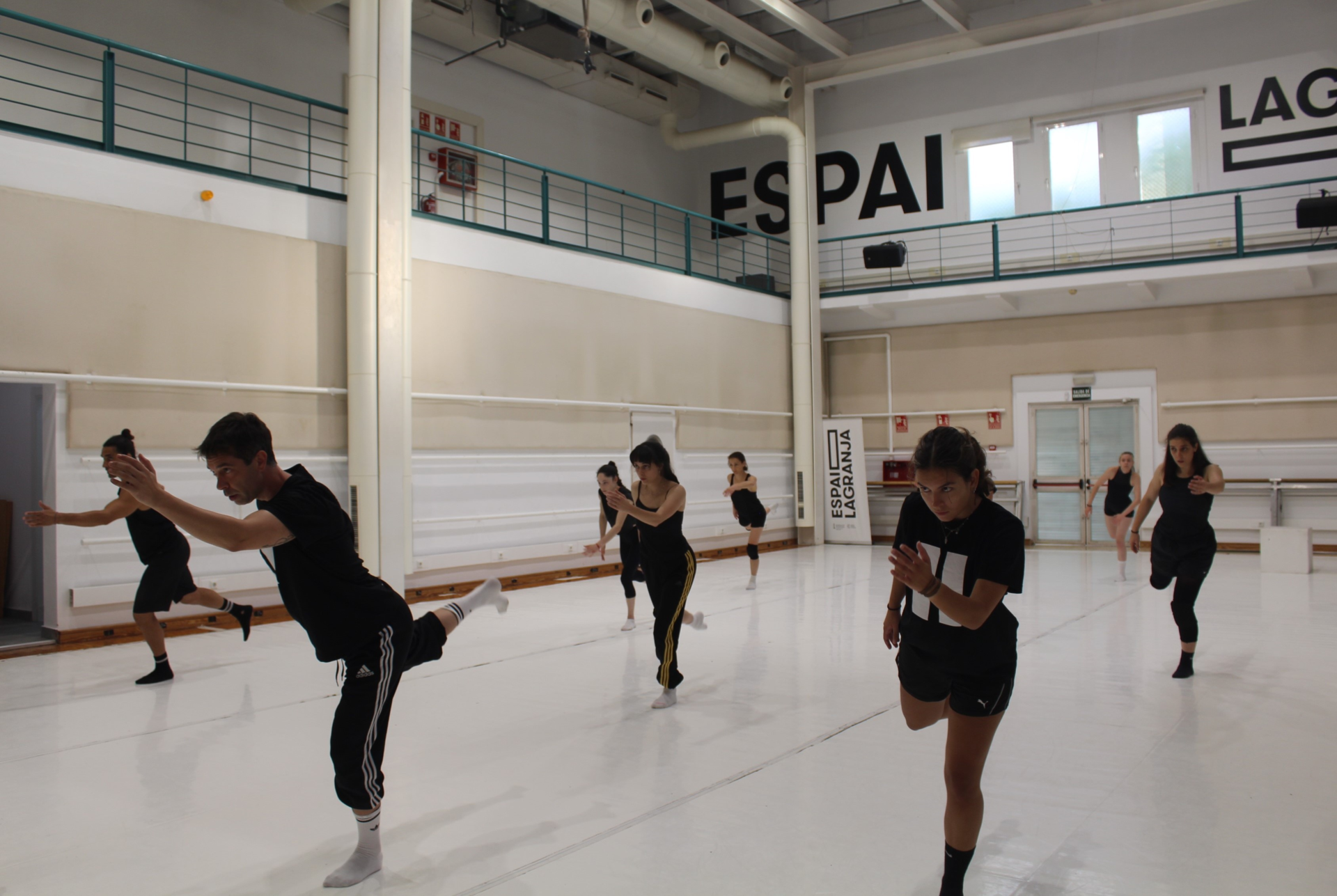
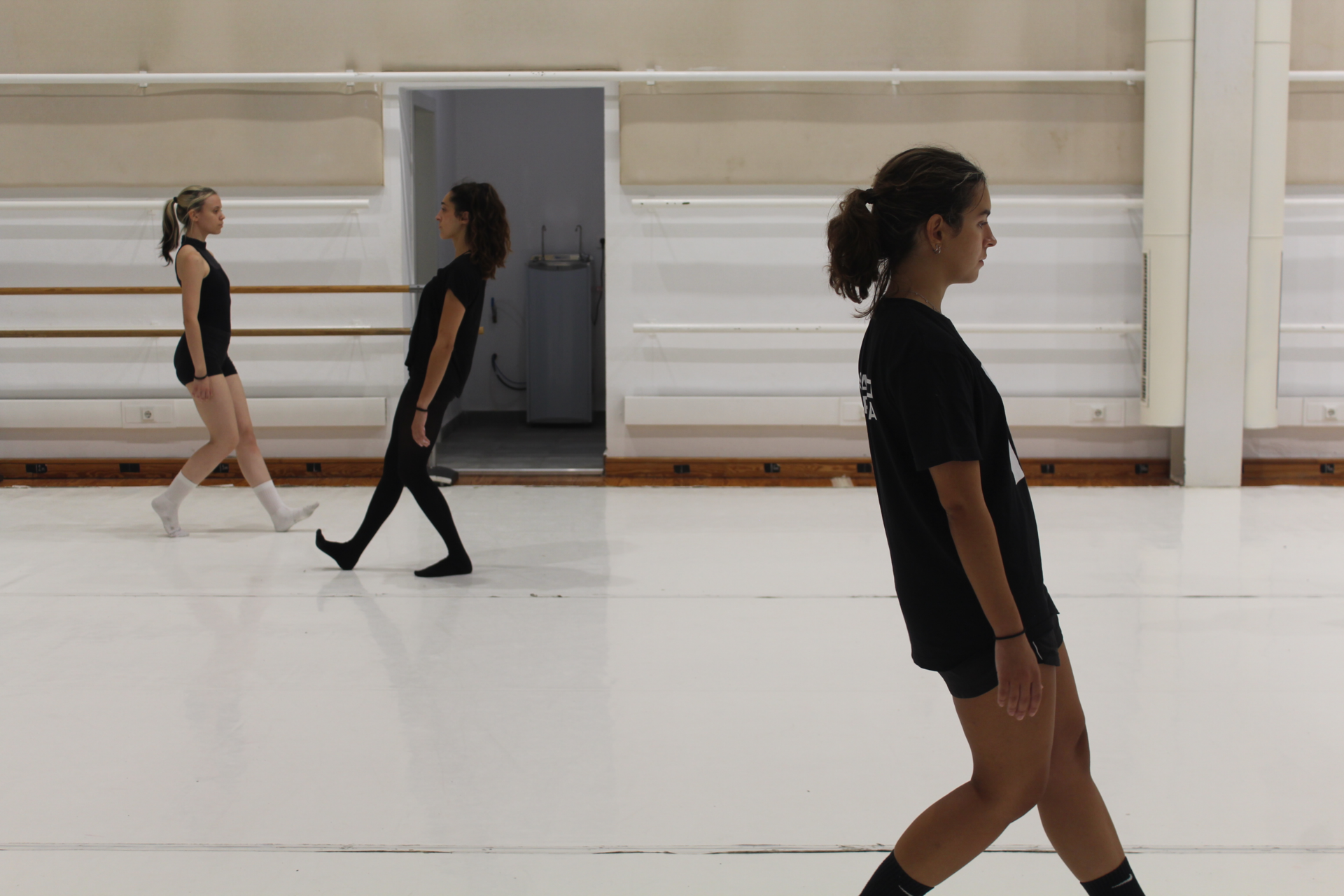
However, the creative process of a show does not end at the coordination meetings, but grows, matures and changes during rehearsals. It is at these moments that different ideas are tested, discarded and adapted. A costume is proposed, the lighting of the elements and scenes is worked on, and a set design is defined, as well as the technical needs that the space will require. Each of these artistic aspects, which in many cases are overshadowed by the choreography itself, come together to give the show its final form.
